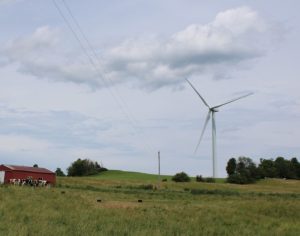CAMILLUS — The Onondaga County Resource Recovery Agency (OCRRA) has expanded its compost site in the Amboy section of Camillus, following what the agency called “an extensive remodel.” OCRRA actually reopened the facility at 6296 Airport Road last November after completing work on the $2.4 million Aerated Static Pile compost system, according to an OCRRA […]
Get Instant Access to This Article
Become a Central New York Business Journal subscriber and get immediate access to all of our subscriber-only content and much more.
- Critical Central New York business news and analysis updated daily.
- Immediate access to all subscriber-only content on our website.
- Get a year's worth of the Print Edition of The Central New York Business Journal.
- Special Feature Publications such as the Book of Lists and Revitalize Greater Binghamton, Mohawk Valley, and Syracuse Magazines
Click here to purchase a paywall bypass link for this article.
CAMILLUS — The Onondaga County Resource Recovery Agency (OCRRA) has expanded its compost site in the Amboy section of Camillus, following what the agency called “an extensive remodel.”
OCRRA actually reopened the facility at 6296 Airport Road last November after completing work on the $2.4 million Aerated Static Pile compost system, according to an OCRRA news release.
OCRRA also invested an additional $2 million in heavy equipment to manage the incoming organic materials, the agency said in a follow-up email message.
The organization self-financed the project and has applied for a grant from the New York State Department of Environmental Conservation that would reimburse OCRRA for 50 percent of the development costs.
The renovation work has transformed the Amboy site into New York’s “largest municipal food scrap [and] yard-waste composting facility,” OCRRA contended in the news release.
The agency held a reception May 8 to mark the formal reopening.
OCRRA used the event to highlight its efforts to keep commercial and institutional food scraps out of the trash. The Amboy site recycles food scraps into soil amendment, or what is also known as compost.
The system is designed to process more than 9,000 tons of local institutional and commercial food scraps a year and will generate more than 30,000 yards of compost annually.
Engineers in the Cazenovia office of Australia–based GHD designed the facility, according to OCRRA.
Since reopening in November, the Amboy compost facility is processing more than 50,000 pounds of food scraps on a weekly basis. The scraps are turned into a soil amendment that meets the U.S. Composting Council’s Seal of Testing Assurance, according to the news release.
Compost returns “valuable” nutrients to the soil and “improves” the environment when used in gardens, landscapes, and green infrastructure projects, OCRRA said.
Haulers deliver food scraps from local businesses or nonprofits, including Syracuse University, Destiny USA, Upstate University Hospital, Wegmans, Ramada Inn, the Oncenter, the Marcellus Central School District, and Pastabilities, a restaurant in Armory Square.
OCRRA then uses technology, such as a Crambo shredder, in a process that recycles food scraps into finely-screened compost.
The agency contends its process is “roughly 80 percent more efficient than other approaches,” noting it takes only 60 days to create OCRRA compost instead of the usual 270 days.
The compost is available for purchase in bulk at both the Amboy and Jamesville compost facilities and at more than a dozen local retailers.
At 15 percent, food scraps are currently the largest component of trash that is not mandated for recycling, Greg Gelewski, OCRRA recycling-operations manager, said in the news release.
He was among the speakers at the opening reception.
“We’ll be moving on and taking that lost resource and creating a resource and putting it back into our soils, [from] closing that loop for our generators to closing that loop for our soils that we deplete,” Gelewski said.
The OCRRA facility turns food scraps into compost that revitalizes local soil and grows healthy plants and vegetables that eventually become food scraps again, Gelewski said.
The system mixes food waste in a 3:1 ratio with a bulking agent (yard waste and wood chips), according to the OCRRA website.
It is then arranged in long concrete bunkers that have a system of pipes running beneath them.
Electric blowers that pump air through the piles at scheduled intervals power the pipes, the website says. The pipes allow air to circulate through the piles and create “optimal” conditions for decomposition.
After the food waste has decomposed and has met all of the temperature and monitoring requirements, the finished compost is screened for use as a soil amendment and sold to the community.
The event’s speakers also included Lori Scozzafava, executive director of the Bethesda, Md.–based U.S. Composting Council, who congratulated OCRRA on the project.
“I know a lot of work has gone into this effort, building a well-run operation and expanding it to include food scraps is a phenomenal issue, and I truly believe that Onondaga County will be better off for having this facility in place,” Scozzafava said in her remarks during the event.
OCRRA is a public-benefit corporation that manages a solid waste, recycling, and composting system.
Contact Reinhardt at ereinhardt@cnybj.com




